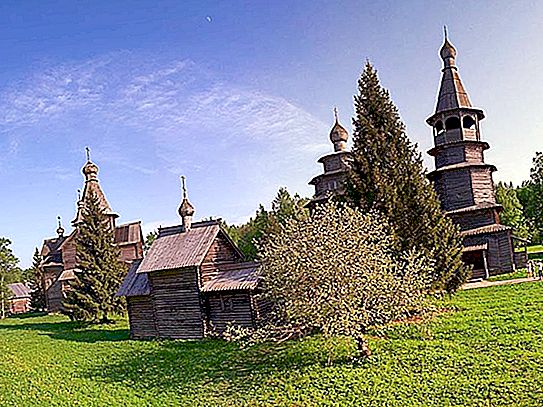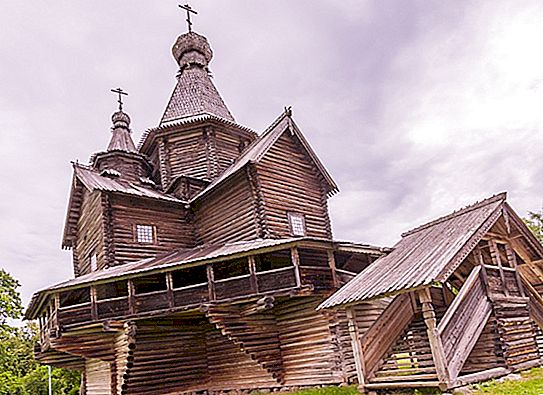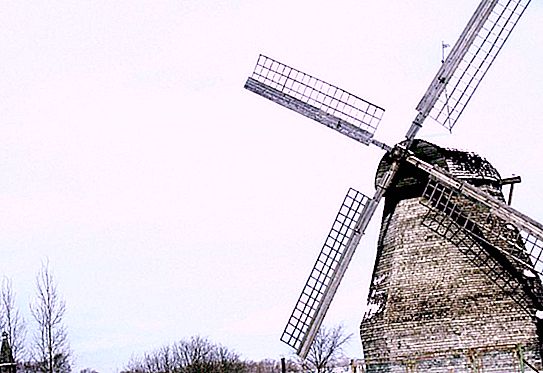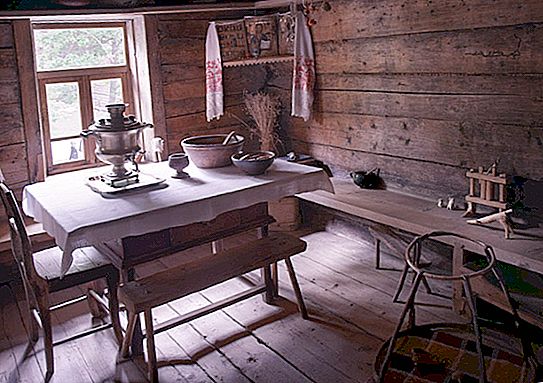There are several museums of wooden architecture in Russia, one of them is located near the ancient city of Veliky Novgorod. The exposition is located next to the St. George Monastery on the shores of Lake Myachino and is called the Museum of Wooden Architecture Vitoslavlitsy.
Historical area
The name of the Vitoslavlitsy Museum of Wooden Architecture in Veliky Novgorod is no coincidence. Roughly in the 11-12 centuries on this territory there was a village in whose honor the museum was named. Information about the village is drawn from the chronicles, which tell us that the Prince of Novgorod Izyaslav transferred the area of Vitoslavlitsy under the rule of his brother.
Also, when studying the ancient text, it became known that Panteleimon Monastery flourished in these lands, in which in 1207 the wooden church was replaced by a stone one, and the village, being in the sphere of influence of the monastery, became a monastery settlement. The Museum of Wooden Architecture "Vitoslavlitsy" was founded in 1964, covers the territory of the noble estate of Countess A. Orlova-Chesmenskaya. The total area of the open-air museum is 33.4 hectares.
Of the manor buildings, two buildings have survived - the classical-style master’s two-story house, designed by K. Rossi in the early 19th century and an outbuilding. Around the house are preserved fragments of alleys, some parts of the park and a picturesque pond with an island. In the count's house there is an exposition "Folk Art of the Novgorod Region", which presents the work of local artists in traditional techniques. Since 2017, restoration work has been underway in the estate; it is closed for visits.
The structure and principles of creating an exposition
The Vitoslavlitsy Museum of Wooden Architecture in Veliky Novgorod is an architectural and ethnographic complex of historical buildings where the visitor can join the traditional culture of the region.
Conventionally, the territory of the museum is divided into four sectors:
- Poozerny.
- Pretrakovo-Mstinsky.
- Southwestern.
- Northeastern.
The basis of each zone are residential buildings with household buildings. The creators of the Vitoslavlitsy Museum of Wooden Architecture pursued several goals, the main ones were:
- The salvation of unique wooden buildings.
- The exposition is a reflection of the characteristic features and planning features of the villages of Novgorod.
- The basis of the exposition is peasant farms of different centuries with a full set of personal buildings.
- The selection of exhibits is based on the principle of content in the object of folk traditions, and not the time of construction.
- Monuments are being restored, later layers of culture are cut off.
- Buildings should be suitable for creating thematic exhibitions.
- The centers of compositions of each sector should be religious buildings, surrounded by public, craft and other buildings.
- The master plan of the Vitoslavlitsy Museum of Wooden Architecture is adjusted in the process of creating the exposition.
Permanent exhibitions
The core of the museum’s composition has become a traditional churchyard for rural areas - three Orthodox churches of various types. Most structures have expositions, permanent or temporary exhibitions. An ethnographic museum operates on the territory of the complex, the employees of which conduct bright and original holidays in folk traditions.
In the formerly residential huts of the Vitoslavlitsy Museum of Wooden Architecture, there are permanent exhibitions:
- "Winter life of the peasants of the Novgorod region."
- "Wedding. Prince's table. Clet Rite. "
- "Spring and summer holidays."
- "Christening".
- "The economy, daily life of the peasants of the Novgorod region."
First exhibits
The process of forming the exposition of the Vitoslavlitsy Museum of Wooden Architecture began in September 1964. The first transported object was the Church of the Assumption from the village of Kuritsko built in 1595. The official date of the foundation of the museum is September 10, 1964, on this day the lower flange of the church was cut down.
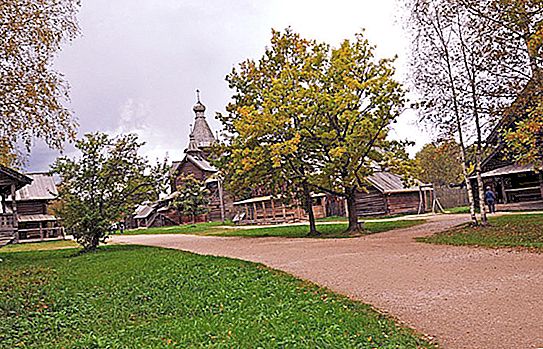
Over the next 17 years of the complex, the funds were replenished with 19 unique buildings. Thanks to the employees, a significant part of the exposition is occupied by churches, 10 religious buildings - 7 churches and 3 chapels are collected here. The Assumption Church was placed in the Priozerny sector, later it was transferred to different areas of the museum three times. The temple is notable for the fact that it preserved 22 original strange icons. The most valuable images are the Assumption (14th century) and St. Nicholas (the border of the 14-15th centuries). With the beginning of work, these two rarities were given to the People's Museum, where they are still located. The third icon "The Sign from the Icon of the Virgin" is now on display at the Tretyakov Gallery.
Also on the territory of the museum complex are the remains of the stone buildings of the Panteleimon Monastery, found during excavations. The central part of the open-air museum is occupied by the exposition “Pogost”. It is formed by three ancient churches - the Church of the Nativity of the Virgin (v. Peredki, 1531), the church of the Assumption (v. Nikulino, 1599), the church of St. Nicholas (v. Vysokiy Ostrov, 1688).
Museum complex
A typical two-row village development has been recreated in the Prikratovo-Mstinsky sector. Four peasant estates were established here - the Tunitsky house (19th century), the hut Tsareva (19th century, first half) and the Shkiparev estate (late 19th century) and the chapel of the village of Kashira (18th century). A characteristic feature of the buildings is a rich carving of facade elements, window frames, intricate design of indoor galleries.
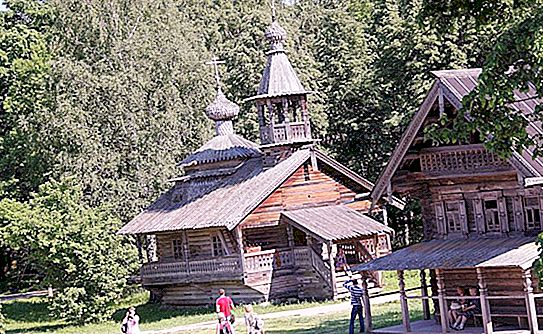
The formation of the Northeast Sector was started in 1972. In this part of the museum, the exposition is represented by the chapel of the village of Gar (1698), utility buildings - the threshing floor, Riga from the village of Grobukhino (early 20th century). In 1993, the Utenkova hut from the village of Ust-Kirovskoye (1880), a bathhouse from the village of Pogorelki, were brought to this site.
In 2003, the exposition was replenished with the hut of a peasant Dobrovolsky from the village of Votros (1870) and the stable of Minin (village Okladnevo).
The master plan assumes that the Priozerny sector will be fully dedicated to the culture of Priilmenye. Today, the collection is constantly updated, now there is the Temple of St. Nicholas (1688) from the village of Tukholya, two fishing soimas and a boat.
Fund replenishment
Single monuments of architecture are no less interesting. In the 12th century, along with the Panteleimon Monastery and the village of Vitoslavitsa, the boundary stone is mentioned in the annals. For a long time he was considered lost until underwater archaeologists found him in the Volkhov riverbed. They managed to raise it to the surface, clean it and reinstall it in a historic place, the event happened in 2008.
At the walls of the St. George Monastery, the formation of the mill department of the exposition began. So far, only one mill from the village of Ladoshchino is located on the site (beginning of the 20th century). At the fork in the road, a barn from the Iversky Monastery (19th century) is installed. Inspection of the entire complex of buildings will require a lot of time and effort. Connoisseurs recommend visiting the excursion at the opening of the exhibition, the address of the Vitoslavlitsy Museum of Wooden Architecture: Yuryevskoye Shosse, museum complex.
Living museum
In total, more than 30 exhibits were collected at the Museum of Wooden Architecture. According to the observations of historians and restorers, Orthodox churches live much longer than any other wooden structures. The oldest church of the museum is the Church of the Nativity of Christ from the village of Peredki, dating from 1528-1531 years of construction.
The Vitoslavlitsy Museum invites visitors to get acquainted with the thematic expositions “Stables in early spring - late autumn”, “Threshing floor in early spring”, “Toloka - processing of flax”, deployed in historical sites. Also in the museum’s collection are Riga, a forge, a barn and a bathhouse, where the exhibition “Bathhouse. The washing up". In 2013, the ancient Peter and Paul Church was consecrated from the village of Gar, it restored the sacred object - the column. In the temple there is an exposition “Peter's Day. Chapel feast."
Since 2014 in the double hut of the Dobrovolskys the exposition “Woolly Craft” and “Merchant’s Parish” were opened. One of the fascinating elements of the excursion is the opportunity to participate in a master class felting wool products in the interior of a peasant's hut, where all the items are genuine, collected on expeditions.
Folk festivals, folk festivals are regularly held on the territory of the museum complex, master classes are held, guides talk not only about each wooden building, but also about the culture and life of the ancient Novgorod region. Weddings are frequent in the museum; they are often held in folk traditions, which are venerated in the Vitoslavlitsy Museum of Wooden Architecture. Complex address: Veliky Novgorod, Yuryevskoye Shosse, MNDZ Vitoslavlitsy.
What did you like
There are many museums in Veliky Novgorod, each of them carries a part of the history of not only the city, but the whole country. The museum-reserve unites all local attractions, and the Vitoslavlitsy Museum of Wooden Architecture is also part of its structure. Visitors' reviews say that the territory of the complex is vast, in this picturesque place you can spend the whole day, but even in this case, not everyone can see the entire exhibition.
Tourists note that the churches and chapels assembled in Vitoslavlitsy are very intricate, beautiful and unusual. Most townspeople are already used to seeing temples built from more durable material, and wooden ones look like wonderful, fabulous towers, although such a comparison is not entirely appropriate.
The expositions placed in the huts were liked by everyone, without exception, as visitors tell in the reviews. The Museum of Folk Wooden Architecture “Vitoslavlitsy” is rich in exhibitions, they are located in almost every house. You can find out the details of life, the device of the home at the caretakers. Each hut has a guide and a separate thematic exhibition, during the tour, the visitor learns not only about everyday life, but also about each individual subject of the exhibition, its purpose, methods of creation.
About the farm
The local small farm, which has goats, hens, rabbits, and several horses, earned a lot of positive ratings. Animals are peaceful and gladly accept treats. On horseback, for an additional fee, you can ride. In addition, a farm is set up on the farm where vegetables traditional for central Russia are planted, most of them go to feed the animals of the Vitoslavlitsy Museum of Wooden Architecture. Photos of happy tourists vividly illustrate the pleasure of the excursion, the beauty of the exposition and the landscapes that nature generously shares.
Recommendations
Novgorodians enthusiastically tell about their city to all visitors, give advice on what memorable places to visit, whom to turn for an interesting and informative tour. And to immerse yourself in folk life, it is advised to visit the Vitoslavlitsy Museum of Wooden Architecture. Reviews about him are numerous, they talk about the beauty of the area, and also give some tips - be sure to stock up on water and a small snack. There is a cafe in the museum, but the prices are high, and the quality of the dishes is doubtful. A restaurant is located opposite the museum entrance, but few people looked at it; most of its visitors are groups of foreign tourists.
Also, visitors believe that souvenirs sold in the museum are overpriced. Not everyone is ready to leave empty-handed; you can make a small purchase to commemorate the trip at the fair located near the entrance to the museum - the prices are pleasant, the goods are diverse. Many visitors are advised to visit the museum several times. It is definitely worth taking part in winter festivities, seeing off Shrovetide, celebrating the summer Savior, and in the spring to celebrate Easter with all the people.
What did not like
Opening hours of the Vitoslavlitsy Museum of Wooden Architecture vary depending on the season. In the summertime - from 10:00 to 20:00. Some visitors said that it is possible to see the expositions in the houses only until 18:00, then the exhibitions close. According to tourists, this is not entirely true, it is necessary to open access to the full exhibition until the museum closes.
A lot of negative ratings were given to amenities - there are few benches for relaxation, and the local toilet terrified almost everyone. Visitors said that he was the only one in the entire complex, the premises are rarely cleaned, so few people manage to use it without any special mental and physical inconvenience. This situation is especially unpleasant with the fact that many come on an excursion with children.
